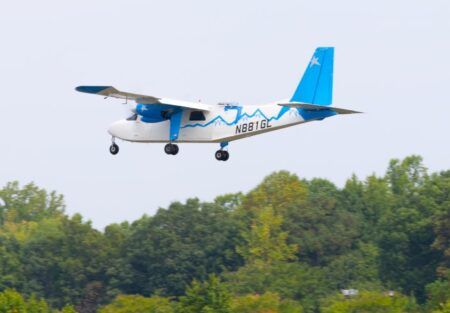Facebook reached another milestone in its Aquila program on May 22 with the completion of a successful second full-scale test flight of the aircraft, which flew for 1 hour and 46 minutes, and landed without incident on the prepared landing site at the Yuma Proving Ground in Arizona.
Aquila’s second test flight took into account the lessons learned from the first flight and incorporated a number of modifications to Aquila. These included adding spoilers to the wings, which help to increase drag and reduce lift during the landing approach; incorporating hundreds of new sensors to gather data; modifying the autopilot software and new radios for the communication subsystem.
After completing the pre-take-off checklist, low winds were declared suitable for the flight, which was carried out just after dawn. The launch speed was calculated at 27mph (12m/s) which was reported to the tow vehicle operators.
The only surprise in the flight was the climb rate which, at 180ft/min (55m/min), was nearly twice as fast as on the first flight. This is attributed to the numerous refinements to Aquila including a smoother finish on the aircraft.
Aquila does nothing fast: it climbs slowly, descends even more slowly, and when flying upwind moves only at 10-15mph (16-40km/h) over the ground. The aircraft is designed this way because it is meant to stay in the same area for long periods of time to supply internet access. Aquila is solar-powered and extremely power-efficient — it runs on the power equivalent of three blow dryers.
This second flight was all about data, including measuring the aircraft’s drag, verifying and refining the structural model, and measuring at various angles the drag created by new spoilers.
After testing of the landing algorithm with an elevated landing attitude, the aircraft landed successfully on the designated site with a stopping distance of 10m.
July 5, 2017




